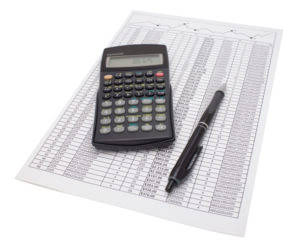
I first encountered the MM designation when I received a quote for surety rates. The bottom line is “MM” provides a clear, compact way to communicate large numbers and amounts in the millions concisely across many contexts. The Roman numeral m means thousands, so mm is the normal balance aggregate in the event that you duplicate m by m, or 1,000 increased without anyone else approaches 1,000,000. On a fiscal report, you can put 1 million as 1mm to give greater lucidity to your bookkeeping division and senior administration when you present these numbers to them.
- To add to the potential for misunderstanding, MM is not the Roman numeral for million.
- The finance, business, and informal sectors frequently use “M” for million.
- The correct abbreviation for “million” in the UK is only M.
- Generally, the abbreviation with two M’s is preferred in finance.
- This methodology differs from everyday slang, which takes the first letter from each word as the primary abbreviation.
- In internet record keeping, for instance, CPM is the cost per thousand impressions of an internet ad.
- Why is there such a difference in terms when they basically mean the same thing?
What does mm mean for month?

On the other hand, “MM” stands for millions, a convention that has gained widespread acceptance in financial reporting and analysis. The double “M” originates from the Latin “mille mille,” meaning “thousand thousand,” which equates to one million. This notation is particularly useful in corporate finance, investment banking, and other sectors where transactions and valuations frequently reach into the millions. For instance, a financial analyst might report a company’s market capitalization as $500MM, clearly indicating $500,000,000. MM means that the units of figures introduced are in millions.
What does “MM” stand for in financial terms?

While you can make MM stand for millions of anything, it’s important that the reader knows whether you’re talking about dollars, euros, units shipped, etc. Perhaps initially, but conventions spread through consistent use and exposure. The mind adapts to reading financial shorthand much like text message abbreviations. So while “MM” may seem obscure initially, recognizing it as shorthand for million provides readability gains. With financial figures growing ever larger, tools like “MM” shrink numbers down to human scale.
- This guide elucidates the conventions, helping professionals from diverse sectors master the art of using “M” and “MM” effectively.
- Even though there is an s on the end, most people will knowwhat you are referring to based on the context of the word.
- That letter isn’t Greek or Roman, but the average reader would likely understand the concept.
- The least ambiguous approach is to simply write them out in words, such as “$ thousands.” This is CFI’s recommended method, to avoid any potential confusion.
- Replacing instances of “million” with “MM” compresses multi-million and billion dollar figures down to a readable, digestible, skimmable format.
- By adopting “MM,” companies can ensure that their financial reports meet these standards, enhancing their credibility and attractiveness to global investors.
What does the abbreviation ‘MM’ mean in accounting?
We’ll explain the correct abbreviation for “million” in this article. Some argue that MM is redundant, since M on its own signifies 1000 in Roman numerals. Finance regulations like MiFID II have pushed to standardize on SI prefixes like k and M instead of MM. In case you are wondering how to measure length in millimeters or how a length of a millimeter or 1 mm looks like, let’s check it out on a ruler. Internet advertisers are familiar with CPM which is the cost per thousand impressions.
It allowed accountants and financial analysts to present large figures in a more digestible format, facilitating better decision-making and financial planning. As commerce and trade expanded during the Renaissance, the need for more sophisticated financial reporting became apparent. Merchants and bankers required a standardized way to represent large sums of money, leading to the adoption of “MM” to denote millions. This period saw the rise of double-entry bookkeeping, a system that revolutionized accounting by providing a clear and systematic method for recording financial transactions. The use of “MM” fit seamlessly into this new framework, offering a concise way to represent substantial amounts without cluttering financial records. The use of “MM” to denote millions in financial contexts has a rich history that intertwines with the evolution mm meaning of accounting and financial reporting practices.
Abbreviation for Million and Thousand: K & MM Meaning

Consequently, MM is equivalent to stating “M increased by M,” which is equivalent to “multiple times 1,000”, which rises to (1,000,000). This aide will investigate how the documentation ought to be utilized, just as elective images that are utilized practically speaking. In the context of international reporting, the use of “MM” to denote millions plays a significant role in ensuring clarity and uniformity across diverse financial landscapes. As businesses operate on a global scale, the need for standardized financial terminology becomes paramount. Moreover, the use of “MM” aligns with the principles of transparency and comparability advocated by international accounting standards. Organizations like the International Financial Reporting Standards (IFRS) emphasize the need for consistent and comparable financial statements.
- In this era, M already signified 1,000, while MM denoted 1 million.
- Now that you know several large number abbreviations, you have access to several options you can use in your reports or other forms of writing.
- It comes from Latin “Mille” meaning “thousand”, so MM is a “thousand thousands” which equals one million.”MM” is widely used in the financial industry.
- You can see this shortened form, for instance, on a Balance sheet, Income articulation, or some other monetary record of a business.
- It saves space and simplifies large numbers, making them easier to understand.
- In the 20th century, the globalization of markets and the rise of multinational corporations underscored the importance of standardized financial reporting.
The term MM simplifies communication in today’s fast-paced financial world. It ensures consistency in global financial documents and contracts. Businesses use MM extensively in presentations, spreadsheets, and investor reports to improve clarity. These abbreviations simplify the reading and comprehension of financial documents. If you have to spend time counting how many zeroes are after a number to understand the full amount, it’ll Catch Up Bookkeeping take extra time to understand what is being communicated to you by an accountant. Financial and accounting statements historically used a different approach to abbreviating thousand and million.


